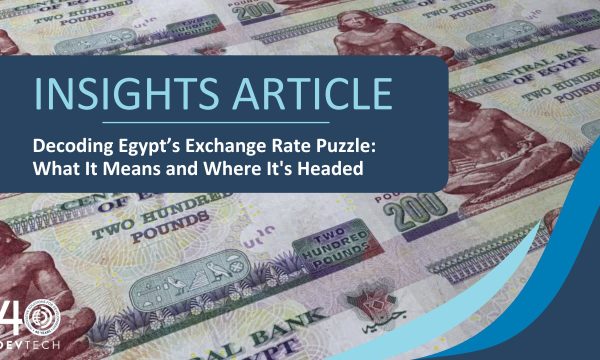Behavior has always been a part of the field of economics. One simply needs to look at Adam Smith’s The Theory of Moral Sentiments (1759) to see how the “impartial spectator” is remarkably similar to the dual system theory of behavioral economics and psychology (Ashraf et al., 2005). Indeed, the impartial spectator is essentially the psychological manifestation of the judgmental friend, looking over the shoulder of the homo economicus, who uses the spectator’s criticisms to guide their decisions (Smith, 1759). Meanwhile, the dual system theory consists of two sets of decision-making processes: the first is impulsive, reactive, and fast, often relying on heuristics (learned rules of thumb), while the second is more discerning and deliberate, taking in a greater range of information beyond one’s own (Kahneman, 2003).
The connections between behavior and economics go beyond the academic field of economics to everyday terms people use related to the economy. The term panic refers to a wide range of acute financial disturbances, such as bank failures, stock speculation, or a climate of fear following the popping of a financial bubble. And while all of these differ in their details, from the tulip bubble in 1637 (a personal favorite) to the 2008 Financial Crisis, there is one thing they have in common: people’s behavior exacerbating the economic fallout.
The relationship between behavior and economics is important to emphasize as there tends to be some pushback from traditional economists (macro, micro, Keynesian, Classical, labor, etc.) when behavioral economics comes up.[1] There is a fear that all established models will be thrown out in favor of newer, shinier behavioral economics models. However, it’s quite the opposite. Behavioral economics helps unblur the edges of the economic agent and makes them more reflective of the people they are actually meant to represent. It puts real people at the center of economics.
This centering of people is why the inclusion of behavioral economics’ tools and concepts is so important in international development: it’s all about people, and people mean behavior. A program can be perfectly designed with the ideal experts, technology, and timing, however if participants are uninterested, then the program will fail.
It isn’t that there is no inclusion of behavior in international development. There is. However, the issue here is that sometimes people’s behavior can be viewed as a ruinous factor rather than a human characteristic. Development practitioners and researchers may bemoan the lack of interest in public health interventions or how households in the Global South pull their children out of school to work in informal markets. Donors and practitioners can ask questions that boil down to “why are people in Country X making these type of decisions?” This places the blame for failed development programs on the people they are intended to work for. Instead, the question stakeholders should be asking is “How can this program be adapted to work with people’s behavior, not against it?”
While this question has many different answers, the inclusion of scarcity in the design, implementation, and marketing of development programs is a clear starting point. The concept of scarcity is foundational to economics—it’s even in its definition; a commonly accepted definition of economics is from Lionel Robbins, who defined the field as the study of how people allocate scarce resources for production, distribution, and consumption, both individually and collectively. However, scarcity is often viewed with a narrow lens, focusing on the absence of inputs, labor, and demand, while ignoring its cognitive impacts and how scarcity perpetuates poverty.
When the concept of scarcity is applied to the Global South, issues such as poverty, conflict, and poor governance, all of which create a lack of stability, money, and time, have permanent impacts on development. Mullainathan and Shafir’s 2013 book Scarcity: Why Having Too Little Means So Much lays out its vicious cycle. The lack of a particular resource, whether its money, food, safety, or time, causes individuals or households to focus solely on its absence, reducing the attention paid to other issues or topics. Mullainathan and Shafir refer to this as tunneling where people neglect all other matters. This causes individuals to miss out on important opportunities or investments, and exacerbates other cognitive biases, such as present bias—overweighing of the present relative to the future (O’Donoghue & Rabin, 2015)—or loss aversion—feeling loss more acutely than gains of similar sizes (Kahneman & Tversky, 1979). Families can then engage in behavior that is not only irrational but also counter to their best interests.[2]

This cycle is exemplified by the tradeoffs many households in the Global South face in regards to education. While education is a well-documented avenue for escaping poverty and increasing households’ standard of living, it can also present significant opportunity costs in the context of the Global South. More specifically, when children are in school, they are less able to support family businesses, work, and help with household maintenance. Additionally, attending school costs money; uniforms, supplies, and transportation have all been found to be obstacles to accessing education, especially for girls (Hallfors et al., 2015). So, in a context of scarce finances, parents may look at education as a burden rather than an investment in their children’s future. Their bias towards the present causes them to disinvest in school, pulling their kids out to work in informal markets or to perform domestic labor. This is clearly counterproductive to their long-term prosperity. However, to the parents who have scarce resources, this helps smooth their present consumption.
Households are constantly juggling—shifting resources from one problem to another—essentially performing a quick triage before moving on to the next issue. This inhibits the ability to plan for the future, invest in human and physical capital, and develop resilience against shocks. In a study from 2007, Chetty and Looney found that while both Americans and Indonesians reduced their food consumption by 10 percent when unemployed, Indonesians engaged in other costly behavior, such as pulling their kids out of school, to smooth consumption. This constant patching of issues, which focuses on the present completely to the future’s detriment, keeps families in poverty.
Scarcity also reduces the available bandwidth people have to focus on other issues. Children who are experiencing problems at home that result in poor sleep or eating are unable to fully focus on learning. Similarly, for adults, the constant burden of worrying about money can create a feeling of treading water. Other tasks, such as preventative health measures, long-term investments, or education, become less important but also more difficult to process.
Juggling and bandwidth issues can make program requirements that are implemented for reasons related to cost-effectiveness or efficiency significant barriers to participation. Thus, a major way to design for scarcity is the loosening of these requirements.[3] A clear opportunity for this can be found in the targeting and conditionalities of social protection programs, particularly cash transfers.
Many social protection programs use proxy-means testing (PMT) and self-targeting, both of which can exclude households with scarce resources. For example, PMT, which estimates households’ income by associating “proxies”—e.g., household assets like refrigerators and TVs—with household consumption of expenditure, can seriously overlook the lack of resilience many poor households have against shocks. For a person with a scarce mindset who is already juggling resources, minor shocks can be impossible to overcome. However, since these shocks may not impact household assets, PMT would deem them ineligible for social protection (Kidd et al., 2011).
As an alternative to PMT, governments may use “self-targeting”, an incentive system that encourages only poor people to come forward and claim a benefit. Yet self-targeting often poses physical and time-consuming barriers for those who are plagued by scarcity. Instead of using testing or surveys as barriers, programs use the already limited effort and time poor individuals have. The self-targeting approach requires eligible beneficiaries to wait in long lines, travel far distances, and complete in-person forms. This method assumes that poor people have an infinite amount of time and effort available. In reality, the opposite is true. Poor individuals are constantly juggling their resources to patch over dozens of issues, and in the Global South, where bureaucracy can be a major issue, necessary tasks that may appear simple take an exorbitant amount of time. People plagued with scarcity do not have the time or bandwidth to meet the physical requirements of self-targeting.
The conditionalities on many social protection programs work against the reality of those who face scarcity. Educational conditionalities can include school attendance, typically at least 80 percent of the school year, and health conditionalities can entail regular health check-ups and vaccinations. For many donor- or government-run cash transfer programs, these conditionalities are strict and are meant to modify behavior. Conditional social protection programs, particularly conditional cash transfer (CCT) programs, can exclude certain needy households from participating because they are unable to fit the sometimes stringent requirements. They can also keep households and individuals in poverty. In Malawi, Baird et al. (2010) found that while the CCT was more effective in increasing reading comprehension for adolescent girls than unconditional cash transfers (UCT), it also resulted in negative, non-schooling outcomes. As transfers were dependent on the girls’ attendance records, those that fell below the target, even by a few days, were pulled out of school by their families when the transfers stopped. The researchers found that teen marriage and early pregnancy were much higher for girls who participated in the CCT than the UCT programs. For households plagued with scarcity, particularly financial, the loss of the cash transfer would cause them to further juggle their now diminished resources, and pull their daughter(s) out of school.
There are alternatives to conditionalities to nudge households and individuals into changing certain behaviors. Benhassine et al. (2017) evaluated Tayssir, Morocco’s government-run, labeled cash transfer program (LCT)—a program that while unconditional, explicitly labels its objective. Tayssir provides small transfers to fathers in poor, rural communities, which are not conditional on attendance but are instead labeled as an educational support program. The authors found that there were significant gains in educational attainment, and when conditionality was added to the program, there was almost no difference in attainment levels. And while there was some confusion regarding the LCT, this example illustrates how programs can encourage more productive behavior without excluding households that are experiencing scarcity.
Designing for scarcity though does not begin and end with conditionality and targeting. More generally, development programs can utilize the following principles to work with people’s behavior:
- Create flexibility. Information sessions and meetings are useful ways that programs can market their interventions. However, eligible, poor participants are also juggling other important tasks and may be unable attend. Instead of looking at their absence as an indication of their disinterest, programs should offer additional sessions and meetings, where they go over what was missed (Mullainathan & Shafir, 2013).
- Offer options. Insurance and investment programs are unfortunately underused in the Global South due to a variety reasons, including present bias and loss aversion. Programs and companies can offer eligible participants different financing schemes that are more in line with their reality (e.g., different premium payment schedules, quicker returns on investments).
- Frame your program. Framing refers to how information and options are presented. How a question is framed can have a huge impact on the choices people make. Since people with a scarce mindset already have diminished bandwidth to process new tasks, copious amounts of information on a project won’t make them more incentivized to enroll or continue participating. Instead, a program should know their environment and population and then market their intervention to align with the needs of these communities. Less information can be more.
There will of course be tradeoffs when implementing any interventions that design for scarcity. Loosened requirements and alternative options are more expensive, not only because more people will utilize a program, but also because some who shouldn’t participate (e.g. people who do not require assistance), do. Donors, particularly bilateral donors like USAID, have constituents and legislatures to answer to, and they may not appreciate such a broad, accessible program. However, if donors are interested in breaking the cycle of poverty, scarcity cannot be ignored.
—
[1] Gigerenzer (2008) rejects the idea that people are irrational. Binmore & Shaked (2010) criticize the use of “theory-supportingdata sets” while ignoring other data. Fudenberg (2006) criticizes behavioral economics for a lack of unified explanations for more general phenomena.
[2] Additional research on this topic includes Tomm & Zhao (2017)
[3] While the selectivity of programs is meant to increase efficiency and decrease costs, it also coincides with the occasional claims that assistance, particularly financial assistance, leads to people working less. This assumption relies on the stereotype of individuals in the Global South as lazy and disincentivized. Banerjee et al, debunk this myth in a 2017 paper, where they re-analyze data from randomized controlled trials of cash-transfer programs in six developing countries. The authors find no systematic evidence of transfer programs discouraging work.\
References
- Baird, Sarah, Craig McIntosh, and Berk Ozler. 2010. “Cash or Condition? Evidence from a Cash Transfer Experiment.” SSRN Scholarly Paper. Rochester, NY. https://papers.ssrn.com/abstract=1585038.
- Banerjee, Abhijit V., Rema Hanna, Gabriel E. Kreindler, and Benjamin A. Olken. 2017. “Debunking the Stereotype of the Lazy Welfare Recipient: Evidence from Cash Transfer Programs.” World Bank Research Observer 32 (2): 155–84. https://doi.org/10.1093/wbro/lkx002.
- Benhassine,Najy,Devoto,Florencia,Duflo,Esther,Dupas,Pascaline,Pascaline,Victor. n.d. “Turning a Shove into a Nudge? : A ‘Labeled Cash Transfer’ for Education.” Text/HTML. World Bank. Accessed September 26, 2022. https://documents.worldbank.org/en/publication/documents-reports/documentdetail/673481468197999796/Turning-a-shove-into-a-nudge-a-labeled-cash-transfer-for-education.
- Binmore, Ken, and Avner Shaked. 2010. “Experimental Economics: Where Next?” Journal of Economic Behavior & Organization 73 (1): 87–100. Brown, Caitlin, Martin Ravallion, and Dominique van de Walle. 2016. “A Poor Means Test? Econometric Targeting in Africa.” Working Paper. Working Paper Series. National Bureau of Economic Research. https://doi.org/10.3386/w22919.
- Chetty, Raj, and Adam Looney. 2005. “Income Risk and the Benefits of Social Insurance: Evidence from Indonesia and the United States.” Working Paper. Working Paper Series. National Bureau of Economic Research. https://doi.org/10.3386/w11708.
- Gigerenzer, Gerd. 2008. “Why Heuristics Work.” Perspectives on Psychological Science 3 (1): 20–29. https://doi.org/10.1111/j.1745-6916.2008.00058.x.
- Fudenberg, Drew. 2006. “Advancing Beyond Advances in Behavioral Economics.” Journal of Economic Literature 44 (3): 694–711. https://doi.org/10.1257/jel.44.3.694.
- Hallfors, Denise, Hyunsan Cho, Simbarashe Rusakaniko, John Mapfumo, Bonita Iritani, Lei Zhang, Winnie Luseno, and Ted Miller. 2015. “The Impact of School Subsidies on HIV-Related Outcomes Among Adolescent Female Orphans.” Journal of Adolescent Health 56 (January): 79–84. https://doi.org/10.1016/j.jadohealth.2014.09.004.
- Kahneman, Daniel. 2003. “A Perspective on Judgment and Choice: Mapping Bounded Rationality.” The American Psychologist 58 (9): 697–720. https://doi.org/10.1037/0003-066X.58.9.697.
- Kidd, Stephen. 2011. Targeting the Poorest: An Assessment of the Proxy Means Test Methodology. https://doi.org/10.13140/2.1.3567.6488.
- Mullainathan, Sendhil, and Eldar Shafir. 2014. Scarcity: The New Science of Having Less and How It Defines Our Lives. Reprint edition. New York, NY: Picador.
- Robbins, Lionel. 2007. An Essay on the Nature and Significance of Economic Science. Ludwig von Mises Institute.
- Smith, Adam. 1759. The Theory of Moral Sentiments. Scotland: printed for Andrew Millar, in the Strand; and Alexander Kincaid and J. Bell, in Edinburgh.
- Tomm, Brandon M., and Jiaying Zhao. 2017. “Scarcity Impairs Online Detection and Prospective Memory.” CogSci.








